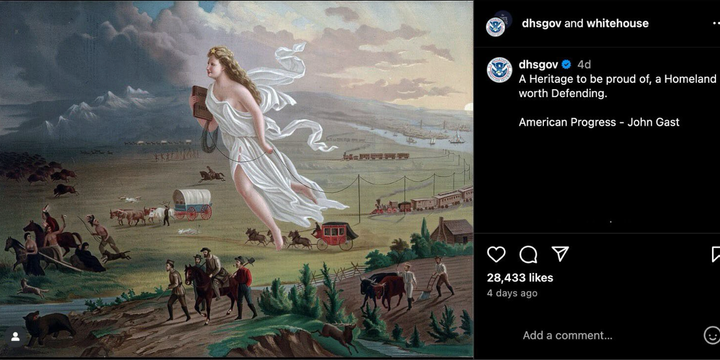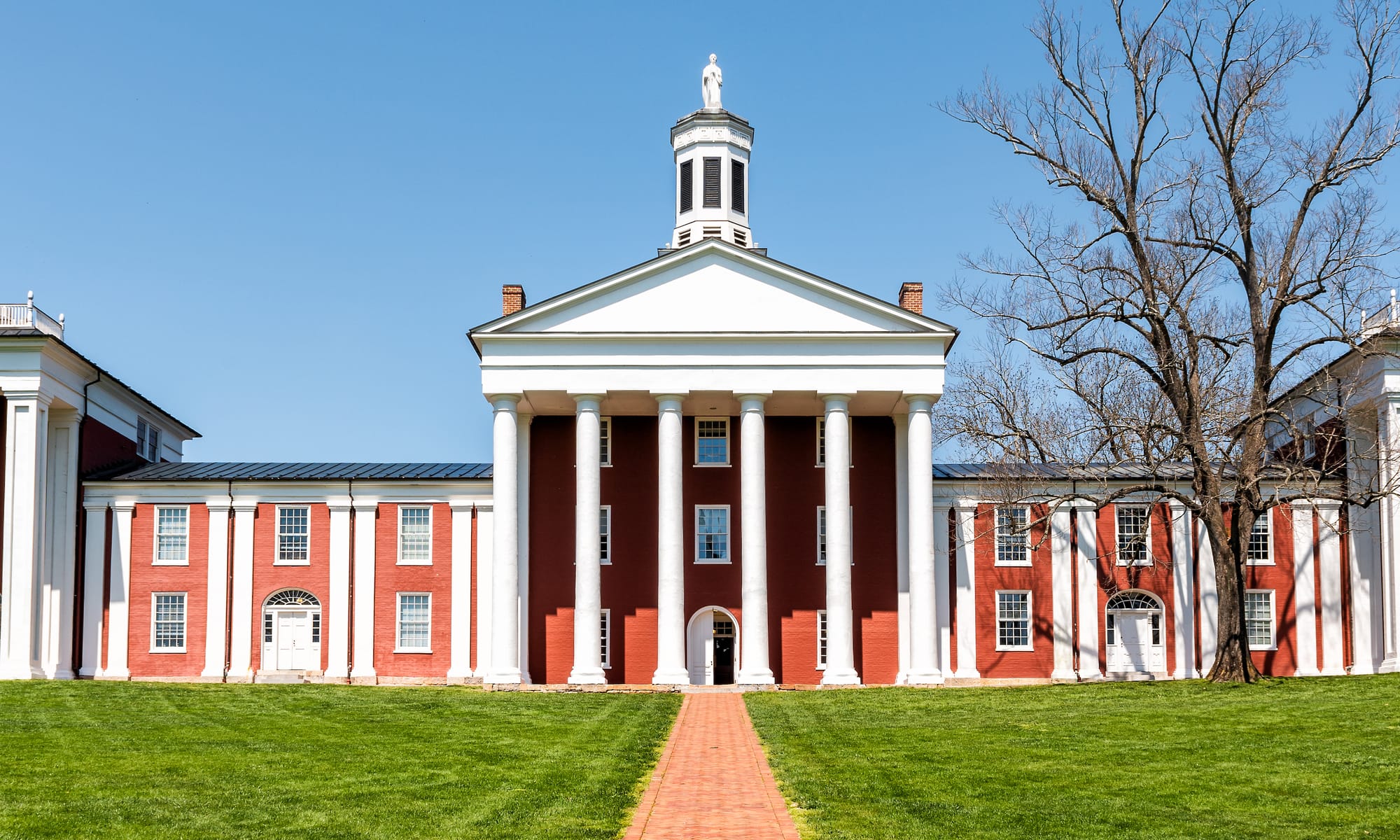Americana becomes anti-immigrant propaganda
A serious of DHS social posts and their use of American art should be very alarming to all. They already alarm the artists and their estates.

The Department of Homeland Security (DHS) has weaponized art for political messaging. How the works are being used has horrified the artist's estates.
The background
As reported in the Los Angeles Times, The Hill, and The Washington Post, DHS made a number of social media posts depicting innocent Americana paintings. But context is everything, and these were more than aesthetic choices.
The paintings appear between posts about the usual MAGA obsessions: "Alligator Alcatraz" (the concentration camp built in the Florida Everglades), immigrant mug shots, and promises to "MAKE AMERICA SAFE AGAIN" through mass deportations. These posts lend the paintings a much darker meaning.
The three works posted tell a story when viewed together. Thomas Kinkade's "Morning Pledge" depicts children walking to a schoolhouse with an American flag. Morgan Weistling's "A Prayer for a New Life" shows pioneer parents with a baby on a covered wagon. The most controversial, John Gast's 1872 "American Progress" (see above) shows a very white version of Manifest Destiny.
Artists and their estates fight back
This has elicited an unprecedented response from artists and their families. The Kinkade Family Foundation immediately sent a cease-and-desist letter to DHS. The letter demands the removal the post featuring "Morning Pledge:"
Morgan Weistling, the only living artist among the three, also condemned DHS's unauthorized use of his work. He wrote that DHS used the painting, which he painted in 2020, without his permission.
The Manifest Destiny problem
Their use of John Gast's "American Progress" gets to the heart the most troubling aspect of this controversy. This 1872 painting is recognized as an allegory of manifest destiny. It shows a blonde female figure (Columbia) leading settlers westward while Native Americans and buffalo flee into darkness.
Anyone can recognize the implications. The painting is a visual representation of Manifest Destiny. The idea that it was the divine purpose and right of European-descended settlers to spread across North America. The concept was also used to justify the forced removal of Native Americans and other groups from their homes.
The DHS posted this image with the caption "A Heritage to be proud of, a Homeland worth Defending." The message was clear and chilling. If you are antything other than white, you are not welcome here.
Beyond appreciation
This isn't just about copyright infringement or artistic integrity—though those are serious issues. As historian Heather Cox Richardson noted, rather than advancing the concept of manifest destiny, the Trump administration's reposting of "American Progress" uses American symbols to advance the idea of "blood and soil" citizenship.
This should ring alarm bells as 1930s Nazi Germany used this phrase and concept.
The timing makes the intent even more transparent. These paintings appeared on DHS feeds that celebrate deportation operations and promote fear-based messaging about immigrants. The images have been widely shared by conservatives. This has sparked alarm among the artists, their families, and historians. They see their use as part of an effort to rewrite the past with an exclusionary view of American history.
The wider battle
What we're witnessing goes beyond a few controversial social media posts. The use of the paintings does not exist in a vacuum. It comes amid a broader effort by the administration to bend country's arts and cultural landscape to its will
This includes drastic cuts at the National Endowment for the Arts and the National Endowment for the Humanities and a major overhaul of the Kennedy Center for the Performing Arts.
Some have even floated the idea of renaming the Kennedy Center after Trump or the First Lady. Such a move would be blatantly illegal, since the statute creating the Kennedy Center specifies its name.
DHS spokesperson Tricia McLaughlin defended the agency's posts: the art "celebrates America's heritage and history."
But whose heritage? Whose history? I think we all know the answer to those questions.
Artistic intent versus government use
But these works are being used contrary to their creators' intentions:
Even the description of "Morning Pledge" on Kinkade's own website contradicts DHS's use of it:
What this means for the country
This controversy reveals something crucial about how symbols and imagery can be co-opted for political purposes. When a government agency uses beloved American art to promote exclusionary policies, it's not just about aesthetics—it's about who gets to define what America means.
Most of the people destined for detention at "Alligator Alcatraz" are guilty of nothing more than hoping for the vision of life presented in "Morning Pledge." That's the bitter irony at the heart the misuse of these works of art.
The artists and their families fighting back remind us that art can represent hope, dignity, and the possibility of redemption for all—not just a chosen few.
We must remain vigilant about how the use of our cultural symbols tell about who we are as a nation.
Non in cautus futuri.


